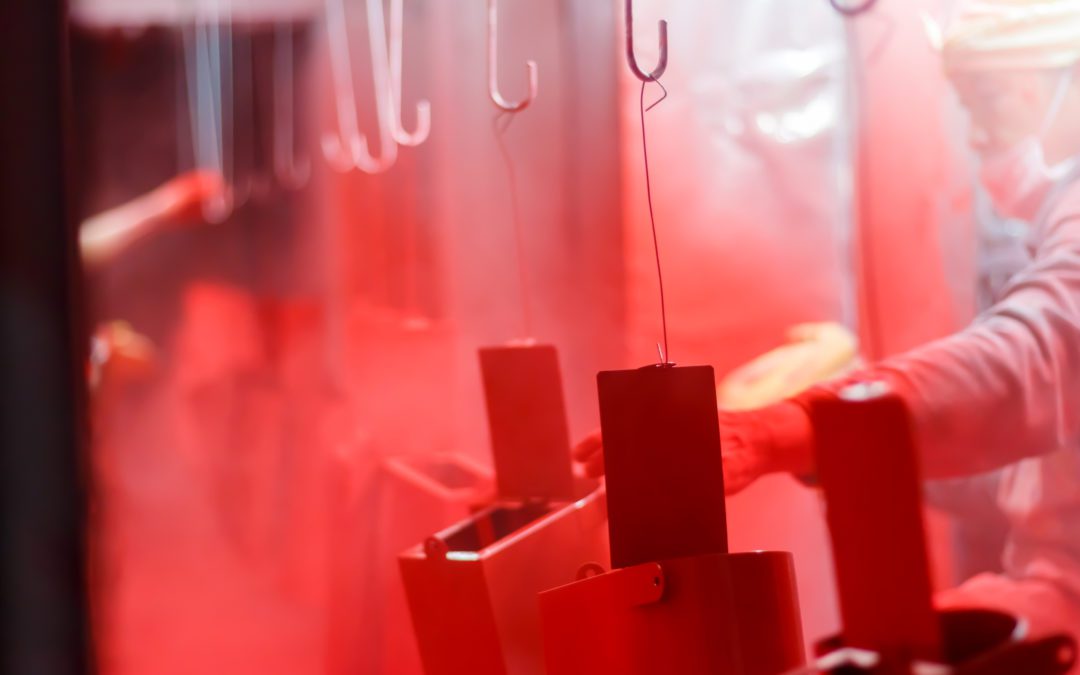The top coat finish is just one of many coating applications, but it’s often the last and only one the customer sees. Therefore, many manufacturers invest in a spray paint booth that enables a high quality finish; however, high quality finishes are different in every industry. For example, powder coatings used to finish small parts or agricultural products are much different than the liquid coatings applied in automotive manufacturing. Maintaining a high quality finish requires matching the spray paint booth to the needs of each product.
Liquid Coatings
Designing a spray paint booth to accommodate liquid coatings should raise three questions:
- Will your liquid coating be applied manually or automatically?
- Is your liquid coating a high quality or functional finish?
- Will your spray paint booth need to accommodate multiple coatings?
Manual vs Automatic
The choice between manual and automatic application methods affects more than the installation of automated spray guns. A manual spray application may cut costs by eliminating the need to install spray gun movers, but it also adds more stringent requirements for filtering and air flow. When an employee is present in the spray booth, a higher air flow may be required to maintain the safety for the operator..
Conversely, automatic spray applications employees will have less paint overspray than a manual system, so the filtering system of an automatic application system may be simplified. Each option requires adjusting different variables in the spray paint booth design.
High Quality vs Functional
Functional finishes, such as rust inhibitors, do not require a high quality finish. A simple spray paint booth will typically accommodate these basic finishes. The basic airflow design, such as a crossdraft booth, can be used to apply these functional coatings. A booth designed for a functional finish is typically simpler and cheaper, but won’t provide the necessary airflow for higher quality finishes.
In contrast, a high quality finish requires a higher performing airflow design. Often, the design takes into account the temperature, cleanliness of the air and the orientation of the part. These types of booths provide for a higher quality finish.
Single vs Multiple Coatings
Manufacturers can save floor space by applying multiple coatings in a single paint booth. To accommodate multiple coatings, the booth is designed to meet the most stringent standards. This means that if a manufacturer wants to apply both a functional and high quality coating, the booth will be designed to the standards of the high quality finish. Applying two coatings in a single booth can be effective for some applications.
When applying multiple coatings, the colored base layer is first applied. Then a high quality finish is applied on top of the base layer for the best results.
Powder Coatings
Powder coatings have gained popularity as an alternative to liquid coatings because of the volatile organic compounds (VOCs) associated with liquid coatings. Much like liquid coating applications, the presence of an employee in the spray paint booth for powder coatings demands different filtering and airflow. However, there are other considerations that need to be taken into account when dealing with powder, as opposed to liquid coatings.
Different coatings have different application methods and equipment requirements, making it absolutely necessary that the ideal spray booth is used for your products. Different coatings have different application methods and equipment requirements, making it absolutely necessary that the ideal solvent is used for your products. At Spray Systems, our experts will ensure that your spray booth’s airflow design is the perfect match for your materials, facilities and employees, so that efficiency and safety can go hand-in-hand. Request a quote by completing our form or give us a call at 800-736-6944.
